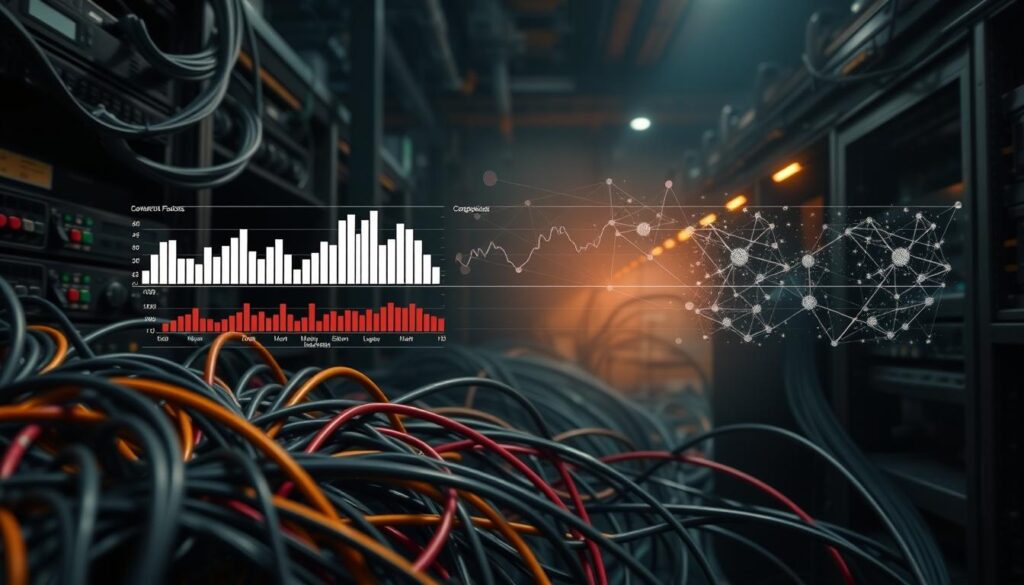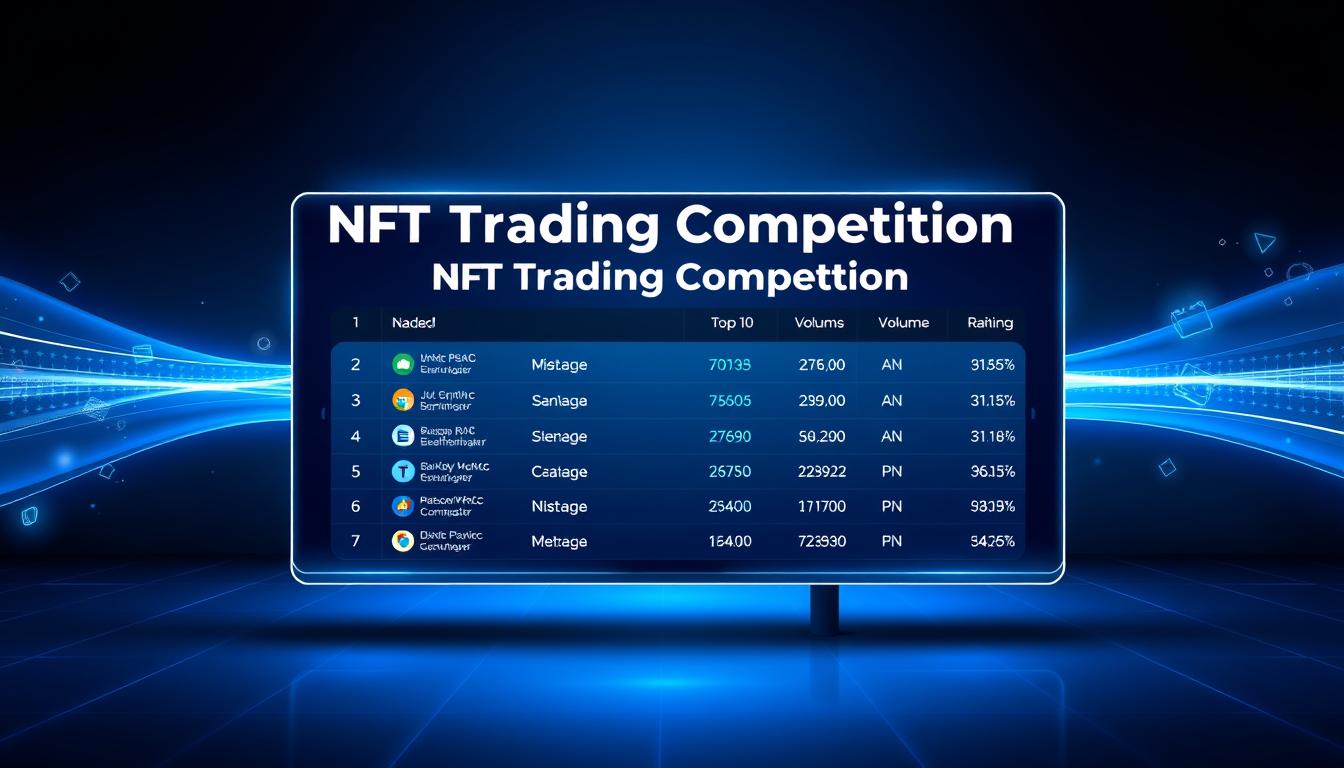Now Reading: Understanding Blockchain Gas Fees Explained and Optimization Tips
- 01
Understanding Blockchain Gas Fees Explained and Optimization Tips
Understanding Blockchain Gas Fees Explained and Optimization Tips

When you participate in the crypto world, you encounter various expenses for moving digital assets. These computational charges power every operation on distributed ledger systems.
Gas fees represent the price you pay for processing power. They cover the energy needed to validate and record your activities. The amount fluctuates based on how busy the system is at any given moment.
Understanding these charges is essential for anyone using cryptocurrency. Whether you’re transferring tokens or using decentralized apps, these costs affect your bottom line. Smart management can save you significant money over time.
This guide will show you why prices change so dramatically. You’ll learn practical methods to reduce your expenses. We’ll explore timing strategies and alternative platforms that can cut costs substantially.
Key Takeaways
- Gas fees are computational costs required for processing blockchain transactions
- Network demand directly impacts fee amounts and processing times
- Different blockchain platforms have varying fee structures and mechanisms
- Transaction complexity influences the final cost you’ll pay
- Strategic timing can significantly reduce your overall expenses
- Alternative networks and Layer 2 solutions offer lower-cost options
- Understanding fee dynamics helps maximize your cryptocurrency value
Introduction to Blockchain Gas Fees
Network participants encounter computational charges that facilitate every operation on decentralized platforms. These payments serve as the economic foundation supporting distributed ledger functionality.
Definition and Importance of Gas Fees
Gas fees represent compensation for computational resources consumed during transaction processing. Validators receive these payments for their work securing and verifying operations.
The importance extends beyond simple cost recovery. These charges prevent network spam and allocate limited processing capacity efficiently.
They create a priority system where higher payments result in faster confirmation times. This market-based approach ensures fair resource distribution during peak usage periods.
Context in Modern Cryptocurrency Transactions
In today’s digital asset landscape, these computational costs significantly impact user experience. As adoption grows, network congestion can drive prices upward.
Understanding this dynamic helps participants make informed decisions. Simple token transfers require different resource levels than complex smart contract interactions.
Various platforms employ distinct approaches to fee structures. Some prioritize security while others focus on affordability, creating diverse options for users.
The community continuously develops tools to navigate these expenses effectively. Strategic timing and alternative networks offer practical solutions for cost-conscious participants.
How Gas Fees Work in Blockchain Networks
Executing operations on a decentralized network necessitates a unit to measure the computational effort involved. This unit acts as the fuel for every action, from simple transfers to complex smart contract interactions.
The system creates a marketplace for priority. Participants essentially bid for limited space within each new block added to the chain.
Role of Validators and Miners
Validators and miners provide the computational power that keeps the network running. They verify transaction validity and execute code.
Their compensation comes from the payments attached to each operation they process. This economic incentive is crucial for network integrity.
They are motivated to select the most profitable transactions from the pool. This ensures the system’s resources are allocated efficiently.

Transaction Processing and Network Security
The workflow begins when a user broadcasts a transaction with a specified payment. Validators then choose which operations to include in the next block.
This model directly strengthens security. It provides sustainable rewards for those who maintain and protect the distributed ledger.
Gas limits are a critical safety feature. They prevent faulty smart contracts from consuming excessive resources.
Different types of transactions require varying levels of computational work. The table below illustrates this relationship.
| Transaction Type | Computational Demand | Typical Priority |
|---|---|---|
| Simple Token Transfer | Low | Standard |
| NFT Minting | Medium | High |
| Complex DeFi Interaction | High | Urgent |
This entire process forms an elegant solution for resource allocation. It replaces a central authority with a transparent, market-based approach.
Calculating Gas Fees: Formulas and Methods
The formula for determining transaction costs is surprisingly straightforward. It involves multiplying two essential numbers. This simple math gives you the total price for any network activity.
Understanding this calculation empowers you to make better financial decisions. You can estimate costs before confirming an action. This knowledge helps avoid surprises and manage your digital assets effectively.
Understanding Gas Units and Gas Price
The total fee is calculated as Gas Units × Gas Price. Gas units measure the computational work needed. A simple ETH transfer uses a standard 21,000 units.
More complex actions, like smart contract interactions, require significantly more units. The gas price is the amount you pay per unit of computation. It is typically measured in gwei on the Ethereum network.
One gwei equals a tiny fraction of one ETH. This denomination makes discussing costs easier. Users often adjust the gas price based on how quickly they need their transaction processed.
The gas limit acts as a safety cap. It prevents a transaction from consuming unlimited resources. This protects users from potential errors in smart contract code.
The Impact of EIP-1559 on Fee Calculations
A significant upgrade changed how fees are structured. EIP-1559 introduced a dynamic base fee. This base amount adjusts automatically based on network demand.
If blocks are more than half full, the base fee increases. When activity is lower, the base fee decreases. This creates a more predictable cost environment.
Users can add a priority fee on top of the base fee. This tip incentivizes validators to process a transaction faster. The base fee is permanently removed from circulation, while the priority fee rewards the network validators.
| Network | Calculation Basis | Unit of Measure | Example Calculation |
|---|---|---|---|
| Ethereum | Computational Complexity (Gas Units) | Gwei (1 gwei = 0.000000001 ETH) | 21,000 units × 50 gwei = 0.00105 ETH |
| Bitcoin | Transaction Size (Bytes) | Satoshis per Byte (sat/B) | 250 bytes × 10 sat/B = 2,500 satoshis |
Factors Influencing Gas Fee Variability
Understanding what drives fluctuations in computational pricing requires examining the relationship between network dynamics and user behavior. Several interconnected elements create the constantly changing landscape of transaction costs.

Network Congestion and Demand
When many participants attempt operations simultaneously, competition for limited block space intensifies. This increased activity forces users to bid higher amounts to secure timely processing.
Peak usage periods like business hours in major markets typically see the highest demand. Conversely, overnight and early morning hours often provide more affordable conditions.
Transaction Complexity and Timing
Simple token transfers consume minimal resources compared to complex smart contract interactions. More intricate operations require significantly greater computational work.
Strategic scheduling can substantially reduce expenses. Using a gas fee calculator helps identify optimal windows for cost-effective transactions.
Major events like NFT launches or DeFi protocol updates create temporary spikes in network activity. These periods often result in dramatically increased prices across the entire ecosystem.
Real-World Examples of Gas Fee Dynamics
Different distributed ledgers show dramatic differences in how they price network operations. These variations highlight the trade-offs between ecosystem size, speed, and user cost.
Examining specific platforms reveals clear patterns. Users can make smarter choices by understanding these real-world scenarios.

Ethereum Versus Alternative Blockchains
Ethereum often has the highest computational prices. A simple ETH transfer can cost between $5 and $30 when the network is busy.
Other networks offer much lower costs. Solana transactions typically cost under one penny. BNB Chain provides a middle ground with fees of just a few cents.
TRON uses a unique model involving staking for free allowances. This makes TRC20 USDT transfers extremely affordable.
Comparative Analysis of Fee Structures
The method for calculating expenses varies significantly. Bitcoin bases its costs on transaction size in bytes.
Ethereum and similar platforms use a model based on computational complexity. This table shows key differences.
| Platform | Fee Calculation Basis | Typical Transfer Cost |
|---|---|---|
| Ethereum | Gas Units × Gas Price (Gwei) | $5 – $30+ |
| Bitcoin | Transaction Size (vBytes) × sat/vB | Varies (~$1-10) |
| BNB Chain | Fixed fee (approx. 0.005 BNB) | Few cents |
| Solana | Ultra-low fixed fee |
This comparison helps users select the right network for their needs and budget.
Strategies for Minimizing Gas Fees
Proactive management of network costs begins with understanding available tracking resources. Savvy participants combine multiple approaches to achieve substantial savings.
Using Gas Fee Trackers and Timing Transactions
Real-time tracking tools provide essential data for cost-conscious users. Platforms like Etherscan’s Gas Tracker display current network conditions and recommended prices.
Wallet applications with built-in estimators empower informed decisions. Users can select different speed options with corresponding costs.
Strategic timing yields significant savings. Network activity follows predictable patterns tied to business hours in major markets.

Late-night and early-morning UTC times typically offer lower prices. Historical data helps identify optimal windows for non-urgent operations.
Leveraging Discounts and Incentive Programs
Many DeFi platforms run promotional periods with reduced transaction fees. Some protocols offer reimbursement programs in their native tokens.
Research before executing trades can uncover valuable savings opportunities. New user incentives sometimes cover operational costs entirely.
Combining these approaches reduces cumulative expenses dramatically. Active participants can save 60-80% on their total costs.
Leveraging Layer 2 Solutions and Alternative Networks
Modern advancements provide powerful tools for reducing operational expenses on distributed ledgers. These technologies offer practical pathways to affordable participation.
They maintain security while dramatically cutting computational payments. This makes digital asset interactions accessible to a broader audience.
Understanding Layer 2 Scalability
Layer 2 solutions process activity outside the main chain. They bundle many actions into a single submission.
This approach shares the base layer cost across numerous participants. Popular platforms include Arbitrum, Optimism, and zkSync.
These networks function like express lanes for your transaction needs. They handle complex contracts and DeFi operations efficiently.
Users experience speed improvements alongside significant costs reduction. Fees typically drop by 90% or more compared to mainnet operations.
Exploring Low-Cost Platforms and Sidechains
Alternative networks present another route for economical interactions. Solana, Polygon, and Avalanche offer native low-fee environments.
These platforms provide different trade-offs between ecosystem size and expense. Major DeFi applications now support multiple chains.
Innovative payment models are emerging across the cryptocurrency space. Gas sponsorship allows applications to cover user fees.
Account abstraction enables paying computational costs with stablecoins. These developments make blockchain technology more user-friendly.
Blockchain Gas Fees Explained and Optimization Tips
Effective cost management requires a combination of strategic planning and practical tool utilization. This approach helps users navigate the complex landscape of computational payments.
Step-by-Step Optimization Tactics
Begin by researching current network conditions before any activity. Tracking tools provide real-time data on pricing fluctuations.
Always verify the correct network type when transferring assets. A simple mistake can lead to permanent fund loss.
Combine multiple small transfers into larger transactions. This reduces cumulative expenses significantly.
Use wallet-recommended settings rather than maximum options. Standard rates typically provide adequate service for most needs.
Practical Tools and Resources
Several platforms offer valuable assistance for cost-conscious participants. These resources help make informed decisions.
Historical data services identify optimal timing patterns. Understanding gas fee calculation methods enhances your strategic approach.
Comparison tools reveal subsidy programs and promotional periods. This knowledge can lead to substantial savings over time.
| Tool Type | Primary Function | Best Use Case |
|---|---|---|
| Real-time Trackers | Monitor current network conditions | Immediate transaction planning |
| Historical Analytics | Identify pricing patterns | Strategic timing decisions |
| Wallet Integrations | Provide fee estimates | Custom transaction settings |
| Platform Comparisons | Show cost differences | Network selection guidance |
Conclusion
Digital asset management reaches new efficiency levels when users master fee dynamics. These computational payments serve as the economic backbone securing decentralized systems.
Understanding what drives price changes empowers smarter decisions. Strategic timing and alternative platforms can reduce expenses dramatically.
The crypto landscape offers diverse options for cost-conscious participants. Each network balances speed, security, and compatibility differently.
Practical optimization begins with evaluating personal priorities. Whether seeking maximum savings or fastest processing, tailored approaches deliver better results.
Technological innovations continue to improve the user experience. Layer 2 solutions and next-generation designs promise more affordable participation.
Mastering these concepts transforms transaction costs from obstacles to manageable variables. This knowledge enhances accessibility across the entire cryptocurrency ecosystem.
FAQ
What exactly is a "gas fee" in cryptocurrency?
A gas fee is the payment users make to process a transaction or execute a smart contract on a network like Ethereum. It compensates validators for the computational energy required to secure and operate the system.
Why do gas prices fluctuate so much?
Prices change based on network demand. When many people want to make transactions simultaneously, competition for block space increases, driving up costs. This congestion often happens during popular NFT drops or high activity in DeFi protocols.
How can I reduce my transaction costs?
You can lower costs by scheduling transactions during off-peak hours, like nights or weekends. Using gas trackers from Etherscan or Gas Guru helps you monitor the market. Also, consider platforms with lower fees, such as Polygon or Arbitrum.
What is EIP-1559 and how did it change fees?
EIP-1559 was an Ethereum upgrade that introduced a base fee for transactions, which is burned, and a priority tip for miners. It made cost estimation more predictable, but high demand can still cause significant price spikes.
Are there blockchains with no gas fees?
Some networks use alternative models. For example, Solana aims for very low costs, while Hedera Hashgraph uses a stable fee schedule. However, some form of payment for network resources is almost always present to maintain security and prevent spam.
What are Layer 2 solutions?
Layer 2 solutions are secondary frameworks built on top of a main blockchain. They process transactions off-chain before settling the final data on the mainnet, drastically reducing fees and increasing speed. Examples include Optimism and zkSync.
Does a higher gas price guarantee faster processing?
Typically, yes. Validators prioritize transactions with higher priority tips because it increases their reward. Paying a premium can help your transaction get included in the next block during busy periods.











